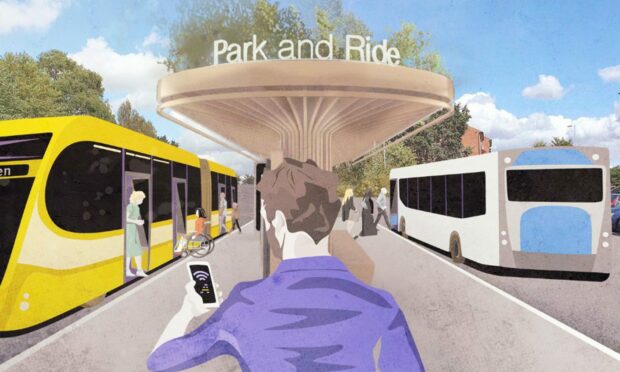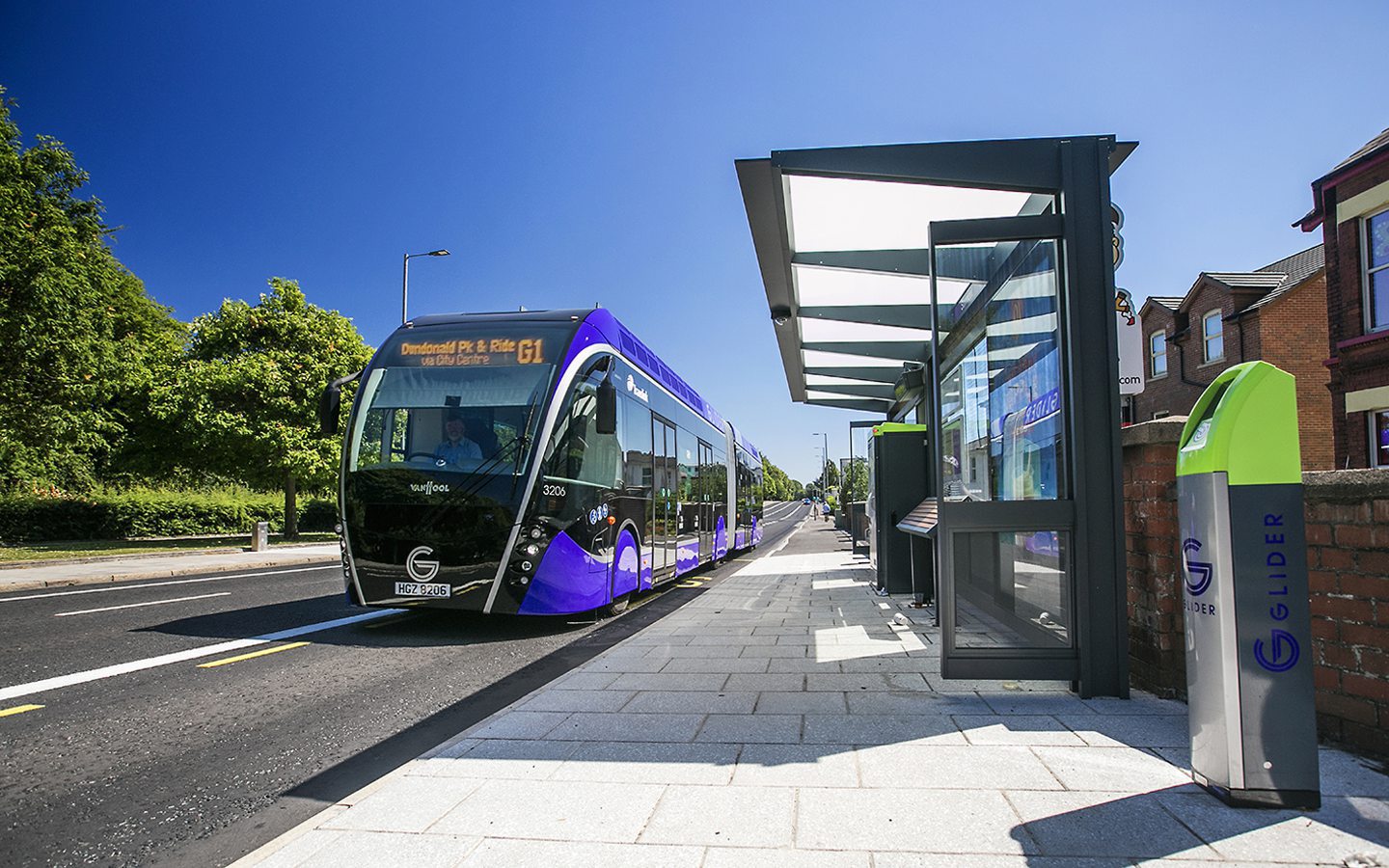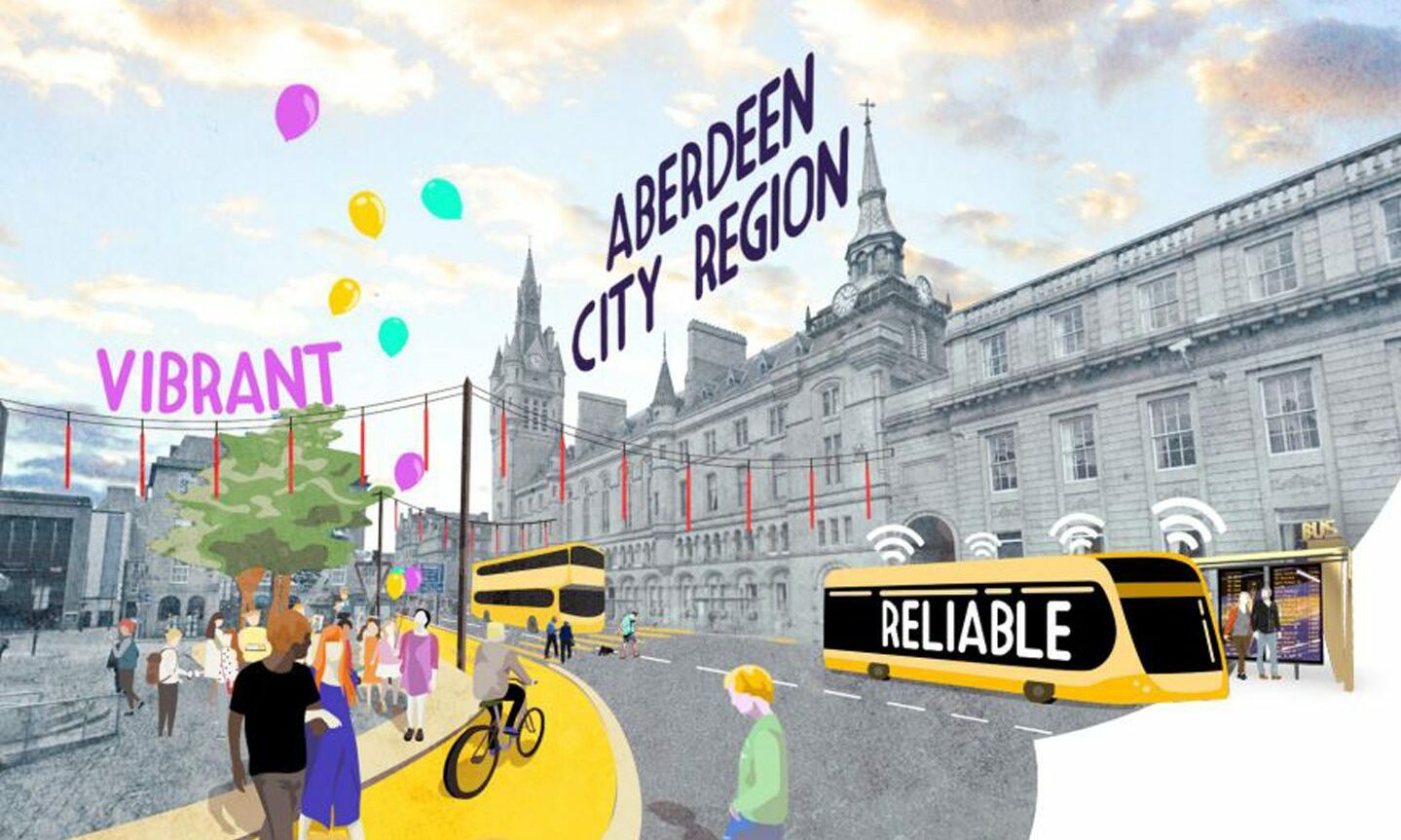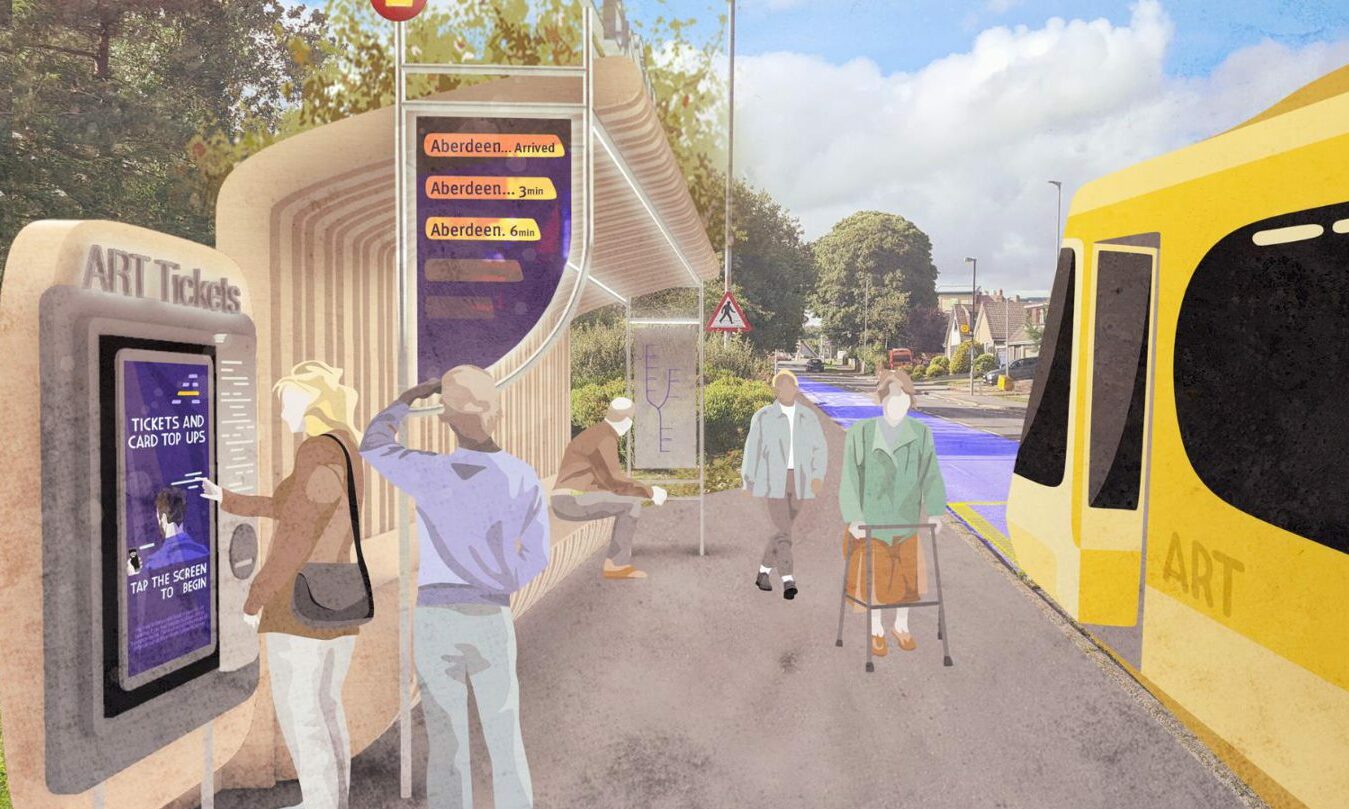Making Aberdeen worse for car drivers would be a price worth paying for the £150 million Aberdeen Rapid Transit project, according to 39% in a survey of north-east residents.
In November, regional transport body Nestrans officially launched the campaign to turn long-discussed plans for an Aberdeen Rapid Transit (ART) system into a reality.
If approved, a fleet of vehicles would be introduced to Aberdeen similar to normal buses, but much larger, and designed to take passengers quickly and efficiently across the Granite City.
The initial plans have been inspired by the £90 million Belfast Glider initiative, which has brought dozens of big purple vehicles to the Northern Irish city.
To get a better feeling of the public’s perception on the ART plans so far, Nestrans commissioned a survey of 400 residents of Aberdeen and Aberdeenshire.
Read on to see the results of that survey, but first…
How would Aberdeen Rapid Transit plans impact car drivers?
The ART project is designed to provide a new way of getting about Aberdeen.
Although it will go on roads, and is shaped like a bus, it is intended to provide a transport service that’s more like a tram in function.
For example, instead of buying tickets on board, you would have to buy them at the stops, like one would for a tram or metro service in other cities.
This, as well as other design choices like multiple doors, would result in the vehicles only needing to stop to pick up and drop off passengers for a few seconds at a time, rather than the lengthy waits you can sometimes get on a bus.
And for the ART to function as intended, changes to Aberdeen’s roads network and its rules would most likely be required, such as dedicated bus lanes just for ART vehicles, and priority over cars at certain junctions.
Our survey says…
The Nestrans survey asked: “Would you be willing to accept that general traffic on the main roads where ART services would operate would need to be more restricted to achieve service journey times and reliability improvements?”
Although 39% of respondents said they think making Aberdeen’s roads worse for car drivers would be worthwhile to create the ART service, the majority of participants said they either disagreed, or were undecided.
21% said no, 27% said maybe, and 13% said they didn’t know.
‘Do you feel ART would be good for Aberdeen?’
However, the majority of respondents think the project overall would be beneficial for the Granite City.
59% of people said yes to this question — with just 9% saying no, 22% saying maybe, and 10% did not know.
‘Why do you think ART would NOT be good for Aberdeen?’
To this question, 46% said they think it would be bad for the Granite City because it would make it more difficult to drive in it.
15% raised concerns about it costing too much money, and 21% said there’s “no need for more buses”.
And 18% gave other answers.
Aberdeen Rapid Transit is part of wider efforts to get people out of cars
The ART proposals are part of wider ambitions to cut car usage across the north-east, by providing travellers with a suitable public transport alternative.
The survey also looked at people’s current travel habits.
Of the 400 people surveyed, 50% of Aberdonians said their main mode of travel is car or van, and this figure was much higher at 72% for Aberdeenshire respondents.
Nestrans also asked residents if they think they would be likely to change their travel behaviour if the full ART proposals went ahead.
39% of those surveyed said they would either be likely or extremely likely to do so.
Nestrans boss says results are ‘encouraging’
Aberdeenshire Councillor John Crawley, the chairman of Nestrans, said the survey has provided “encouraging results”.
He said: “While some have concerns over the potential impact on driving in the city, it is worth noting that almost 40% of people feel they would be more likely to use public transport as a result of ART.
“This would not only support a reduction in car congestion, but in turn contribute to improving local air quality, reducing carbon emissions and improving safety.
“It is our aspiration that ART will improve connectivity for Aberdeen and Aberdeenshire, and make public transport a high-quality, attractive and reliable form of sustainable travel.”
Mr Crawly said that working together with its partners on the project, Nestrans aims to “secure a further significant share of the Scottish Government’s Bus Partnership Fund to deliver ART for the north-east.”






Conversation